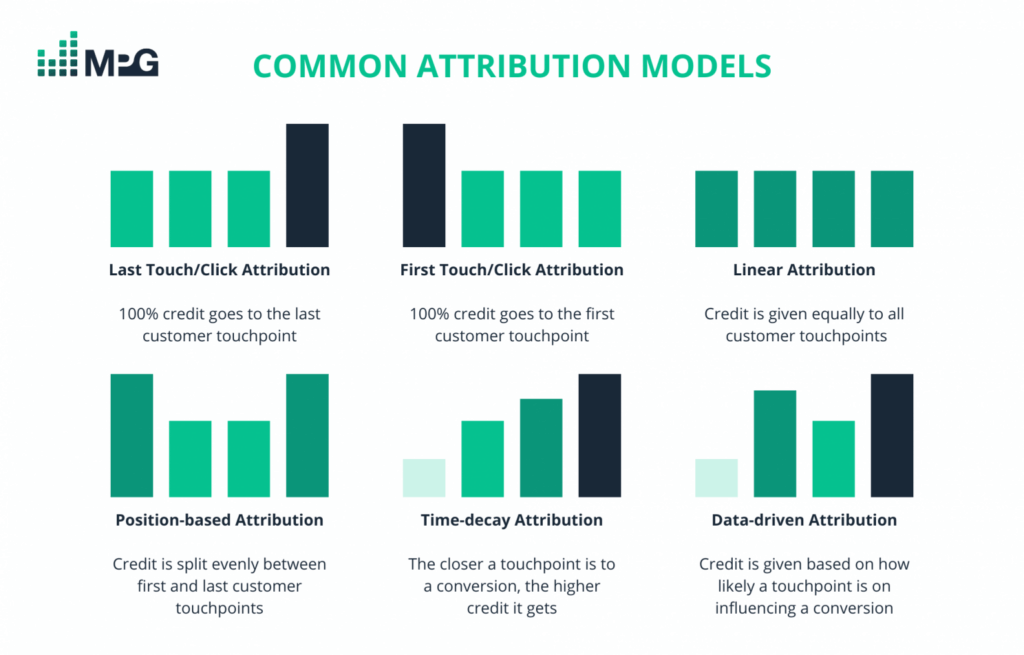Attribution modeling is an essential tool for marketers, allowing them to accurately measure the effectiveness of their marketing channels and campaigns. By tracking and assigning credit to each touchpoint in a customer's journey, attribution modeling provides valuable insights into customer behavior and helps optimize marketing strategies.
| Key Component | Description |
|---|---|
| Understanding Attribution Modeling | Determining how credit is assigned to marketing channels and touchpoints. |
| Importance of Attribution Modeling | Provides insights into customer behavior and optimizes marketing strategies. |
| Different Types of Attribution Models | Include First-Click, Last-Click, Linear, Time-Decay, and Position-Based models. |
| Choosing the Right Attribution Model | Factors: business goals, customer journey complexity, data availability, resource constraints. |
Understanding attribution modeling
In order to fully grasp the significance of attribution modeling, it is important to understand its definition and the importance it holds in the field of marketing.
Attribution modeling refers to the process of determining how credit is assigned to different marketing channels and touchpoints in the customer journey. It helps marketers identify which channels and campaigns are driving the most conversions and generating the highest return on investment.
The importance of attribution modeling lies in its ability to provide a clear and accurate view of the customer journey. By attributing credit to each touchpoint, marketers can identify the strengths and weaknesses of their marketing efforts, make informed decisions based on data, and allocate resources effectively.
Definition and importance of attribution modeling
Attribution modeling is the practice of assigning credit to various touchpoints in a customer's journey. It allows marketers to understand the impact of each touchpoint, thereby enabling them to make data-driven decisions and optimize their marketing strategies. This helps improve the overall effectiveness of marketing campaigns and maximizes ROI.
Key components of attribution models
There are several key components of attribution models that marketers should be aware of. These components include touchpoints, conversion events, weights and algorithms, data sources, and attribution windows.
Touchpoints
Touchpoints represent the interactions or points of contact between a customer and a marketing channel. They can range from a customer clicking on an ad, visiting a website, or engaging with social media content. Each touchpoint contributes to the customer's journey and plays a role in their decision-making process.
Conversion events
These are the actions taken by customers that indicate their engagement or intent to purchase. Conversion events can include making a purchase, filling out a form, subscribing to a newsletter, or downloading a whitepaper. These events are crucial in understanding the effectiveness of marketing efforts and attributing credit to the touchpoints that led to the conversion.

Weights and algorithms
Attribution models use different weights and algorithms to assign credit to various touchpoints, based on their perceived importance in the customer journey. For example, a first touch attribution model may assign all the credit to the first touchpoint a customer interacts with, while a linear attribution model may distribute credit equally among all touchpoints.

Data sources
Attribution models utilize data from various sources, including web analytics, CRM systems, and marketing automation platforms. These data sources provide valuable insights into customer behavior, allowing marketers to analyze and attribute credit accurately
Attribution window
This refers to the timeframe within which touchpoints are considered for attribution. The length of the attribution window can vary depending on the industry and the complexity of the customer journey. A longer attribution window allows for a more comprehensive view of the customer journey, while a shorter window focuses on immediate touchpoints.
By understanding these key components, marketers can build effective attribution models that provide valuable insights into the customer journey and help optimize marketing strategies. Attribution modeling is a powerful tool that enables marketers to make data-driven decisions, allocate resources effectively, and ultimately drive better results.
Different types of attribution models
There are several types of attribution models that marketers can choose from, depending on their specific needs and goals. Each model has its own strengths and weaknesses, and it is crucial for marketers to understand these differences in order to make the right choice.
First-click attribution model
The first-click attribution model attributes 100% of the conversion credit to the first touchpoint in the customer journey. This model is useful in understanding the initial touchpoint that attracted the customer and drove them to take action.
Last-click attribution model
The last-click attribution model assigns all the conversion credit to the final touchpoint before the conversion event. This model is often used to determine the marketing channel that directly led to the conversion.
Linear attribution model
The linear attribution model evenly distributes the conversion credit among all touchpoints in the customer journey. This model provides a balanced view of the impact of each touchpoint and is useful for campaigns with multiple touchpoints.
Time-decay attribution model
The time-decay attribution model assigns more credit to touchpoints that occurred closer to the conversion event. It recognizes that touchpoints closer to the conversion are likely to have a greater influence on the customer's decision-making process.
Position-based attribution model
The position-based attribution model assigns 40% of the credit to the first and last touchpoints, and distributes the remaining 20% among the touchpoints in between. This model acknowledges the importance of both the initial and final touchpoints.

Choosing the right attribution model
Choosing the right attribution model for your marketing strategy is crucial for gaining accurate insights and making informed decisions. Here are some factors to consider when selecting an attribution model:
Factors to consider
Consider the following factors when choosing an attribution model:
- Business Goals: Align the attribution model with your business objectives and goals.
- Customer Journey Complexity: Evaluate the complexity of your customer journey and choose a model that captures the nuances effectively.
- Data Availability: Assess the availability and quality of data needed to support the attribution model.
- Resource Constraints: Consider the resources required to implement and maintain the selected attribution model.
Pros and cons of each model
Each attribution model has its own advantages and disadvantages. By understanding these pros and cons, you can make an informed decision regarding the right attribution model for your marketing strategy.

Implementing attribution modeling in marketing strategy
Implementing attribution modeling in your marketing strategy can be a complex process, but the benefits are well worth the effort. Here are the steps to incorporate attribution modeling effectively:
Steps to incorporate attribution modeling
To effectively incorporate attribution modeling into your marketing strategy, follow these steps:
- Define Your Conversion Events: Identify the specific actions taken by customers that indicate their engagement or intent to purchase.
- Choose an Attribution Model: Select the attribution model that best aligns with your business goals and customer journey complexity.
- Collect and Analyze Data: Gather data from various sources and analyze it to gain insights into the customer journey.
- Assign Credit: Apply the chosen attribution model to allocate credit to the different touchpoints in the customer journey.
- Track and Optimize: Continuously monitor and analyze the performance of each touchpoint, and use the insights to optimize your marketing strategy.
Tools for effective attribution modeling
There are several tools available to help marketers implement and analyze attribution models effectively. These tools provide advanced tracking, reporting, and optimization capabilities to make the process more efficient and accurate.
By utilizing these tools, marketers can gain a deeper understanding of their customers' behavior and make data-driven decisions to enhance their marketing strategies.
Conclusion
Attribution modeling is a powerful tool that enables marketers to understand and optimize the impact of their marketing efforts. By considering the different types of attribution models, weighing their pros and cons, and implementing them effectively, marketers can gain valuable insights into customer behavior, allocate resources wisely, and drive better results.
Remember, attribution modeling is an ongoing process and should be continuously monitored, analyzed, and optimized to keep up with evolving customer journeys and changing market dynamics. With the right attribution model and tools in place, marketers can unlock the full potential of their marketing strategies and achieve greater success.
Unlock your marketing potential with Cello
Now that you understand the transformative power of attribution modeling, it's time to amplify your marketing strategy by turning your users into powerful growth engines. With Cello, you can effortlessly integrate a peer-to-peer referral program into your SaaS product, making sharing seamless and rewarding. Experience the viral growth that comes from delighted users promoting your product. Ready to see how Cello can revolutionize your user-led growth and drive conversions? Book a demo today and witness the simplicity and efficiency of Cello's platform in action.
Resources
Related Articles

Best Referral Software for SaaS with Chargebee Integration: The Definitive Guide to Revenue Attribution
The Strategic Convergence of Billing and User-Led Growth In the contemporary landscape of B2B ...

Automating Stripe Referral Tracking: A Cello Integration Guide
Scaling a referral program manually is impossible. The integration between Cello and Stripe ...

